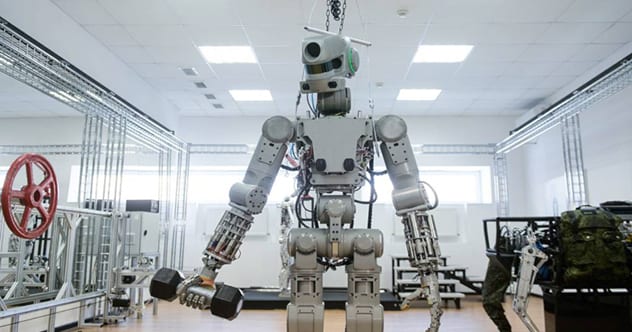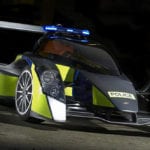 History
History  History
History  Technology
Technology Top 10 Everyday Tech Buzzwords That Hide a Darker Past
 Humans
Humans 10 Everyday Human Behaviors That Are Actually Survival Instincts
 Animals
Animals 10 Animals That Humiliated and Harmed Historical Leaders
 History
History 10 Most Influential Protests in Modern History
 Creepy
Creepy 10 More Representations of Death from Myth, Legend, and Folktale
 Technology
Technology 10 Scientific Breakthroughs of 2025 That’ll Change Everything
 Our World
Our World 10 Ways Icelandic Culture Makes Other Countries Look Boring
 Misconceptions
Misconceptions 10 Common Misconceptions About the Victorian Era
 Mysteries
Mysteries 10 Strange Unexplained Mysteries of 2025
 History
History 10 Things You Didn’t Know About the American National Anthem
 Technology
Technology Top 10 Everyday Tech Buzzwords That Hide a Darker Past
 Humans
Humans 10 Everyday Human Behaviors That Are Actually Survival Instincts
Who's Behind Listverse?

Jamie Frater
Head Editor
Jamie founded Listverse due to an insatiable desire to share fascinating, obscure, and bizarre facts. He has been a guest speaker on numerous national radio and television stations and is a five time published author.
More About Us Animals
Animals 10 Animals That Humiliated and Harmed Historical Leaders
 History
History 10 Most Influential Protests in Modern History
 Creepy
Creepy 10 More Representations of Death from Myth, Legend, and Folktale
 Technology
Technology 10 Scientific Breakthroughs of 2025 That’ll Change Everything
 Our World
Our World 10 Ways Icelandic Culture Makes Other Countries Look Boring
 Misconceptions
Misconceptions 10 Common Misconceptions About the Victorian Era
 Mysteries
Mysteries 10 Strange Unexplained Mysteries of 2025
10 Bizarre World War II Weapons That Were Actually Built
Weapons operate on a simple principle: They’re primarily designed to kill or disable people. How they do that is usually rather straightforward but sometimes borders on insane or ludicrous. Here are 10 weapons from World War II that you won’t believe were actually built.
10 Tauchpanzer
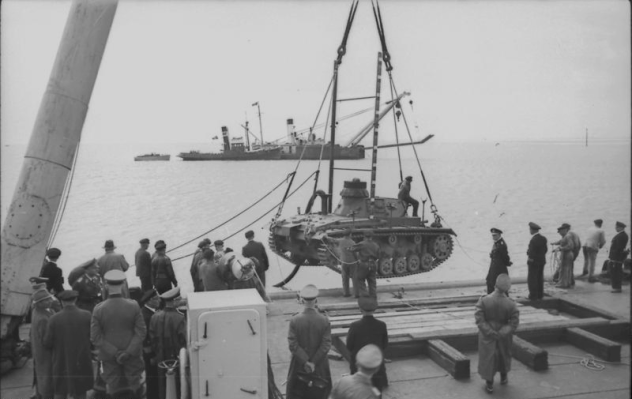
Created by the Nazis for use in Operation Sea Lion, the planned (but never executed) invasion of the UK, the Tauchpanzer, literally meaning “diving tank,” was designed to be dropped off the coast, travel underwater on the sea floor, and clank ashore, ready to provide fire support for soldiers landing on the beaches of Britain. The Tauchpanzers were Panzer III tanks modified to be totally waterproof, featuring one-way exhaust valves, inflatable seals for the turret rings, and a hose attached to a flotation device to get air for the engine.
Even with all of those modifications, the Tauchpanzer could spend no more than 20 minutes submerged and could only travel at a depth of up to 15 meters (50 ft), being limited by the length of its air hose. The design proved a success, however, and more than 150 of the tanks were built. After Operation Sea Lion was canceled, the Tauchpanzers were distributed among more conventional Panzer divisions. They were actually used for their intended role once, to cross the Bug River during the Nazi invasion of the Soviet Union, but were then used as normal tanks afterward.
9 DD Tank
While the Nazis came up with underwater tanks as a method of amphibious assault on enemy shores, the Allies engineered modifications that allowed tanks to float. Specifically, a cloth screen was added, which could be raised around the tank to make it float, in addition to propellers for propulsion. The concept was first explored in 1941, and after testing various tanks, the Allies finally settled on the Sherman tank as the one to modify, although some other tanks were also fitted with the screen and propellers.
The DD Tanks’ combat debut came during D-Day, when they were sent ashore to provide fire support for Allied troops landing on the beach. Rough seas sent 27 DD tanks to the bottom of the ocean, but later waves of the tanks were more successful, and they would go on to be used in further campaigns, including crossing the Rhine into Germany.
8 Karl-Gerat
Germany began work on a super gun designed to penetrate the heavy fortifications of the French Maginot Line in 1936. Originally designed to be transported in pieces and assembled near its target, the gun became self-propelled when designers realized that it was far too heavy and cumbersome. The first gun was undergoing fire trials by 1939 and test drives by 1940. It was named the Karl-Gerat, or “Karl Device,” after Nazi General Karl Becker, who had been intimately involved in the design of the gun.
The mortar was gigantic. It had a 600-millimeter barrel and could throw a nearly 1,800-kilogram (4,000 lb) shell almost 5 kilometers (3 mi), although a later variant with a longer 540-millimeter barrel could propel a shell more than 10 kilometers (6 mi). Each Karl-Gerat had a support train of vehicles consisting of several modified tanks carrying four shells each, but even with ammunition storage offloaded to other vehicles, the mortar and its chassis weighed 124 metric tons.
Six Karl-Gerats were constructed, all of which served on the Eastern Front against Russia and later on the Western Front against the advancing Allies. Among their achievements was smashing the Soviet fortress at Sevastopol, with the massive mortar shells severely damaging the fortress structure and command post. As the war dragged on, the super mortars became less useful, being too cumbersome and obvious to avoid air attack. The Americans and Soviets ended up capturing several of the weapons, and one survives today in a Russian tank museum.
7 Sturmtiger
After the disastrous Battle of Stalingrad, where small groups of tenacious Russian defenders used abandoned buildings and rubble as cover to hold off a much larger group of German troops in street-to-street urban fighting, Hitler demanded the development of a weapon that could blast away fortified urban areas with sheer firepower. The Sturmtiger was born. It was a heavily armored vehicle armed with a massive rocket launcher.
Converted from the chassis of the famous Tiger I tank, the Sturmtiger added more armor to an already very heavily armored vehicle. The rocket launcher, adapted from a naval design, required holes around the barrel to vent the exhaust gas produced by the launching rocket. The projectiles were so large that only 14 could be carried, and even then, one had to be already loaded into the launcher.
The prototype was rushed to suppress the Polish uprising in Warsaw, and a dozen more were produced and saw combat. They were fearsome but inaccurate weapons, and they weren’t well-suited for the defensive war that Germany found itself in after 1943.
6 The Zveno Project

Born out of a Soviet program in the 1920s to provide air support to ground troops while also protecting bombers from enemy fighter aircraft, the Zveno project was a flying aircraft carrier, mating a giant Soviet TB-3 bomber with several smaller and shorter-ranged fighter aircraft or dive-bombers. The TB-3 could carry up to three aircraft, two above the wings and one below the body, or two aircraft below the wings.
The experimental war machine saw use against Nazi Germany during the desperate early years on the Eastern Front, when the Soviet Union was being pushed back. In 1941, a TB-3 bomber carrying two dive-bombers successfully brought them in range of the strategic Nazi oil fields of Ploiesti. The dive-bombers successfully attacked the facility and then returned to Soviet airfields unharmed. Although the Zveno flew nearly 30 missions, it had been retired by 1942.
5 Mistel Flying Bomb
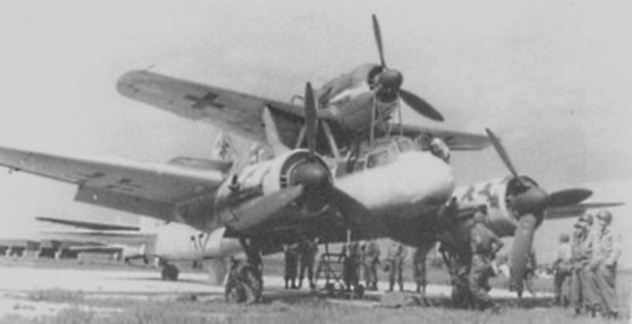
Developed in 1942 by the German Sailplane Association, the Mistel was a concept for an unmanned aircraft packed with explosives, guided to its target by a pilot in a fighter aircraft attached above it. The idea itself was demonstrated in 1943, but it was not until 1944, when the tide of war had truly turned against Nazi Germany, that the idea was put into practice.
More than 100 Ju-88 bombers were stripped of their hardware and converted into gigantic flying bombs packed with 1,800 kilograms (4,000 lb) of explosives, with struts added to attach the guiding aircraft on top of the Ju-88. The Mistel was an extremely slow composite aircraft; it flew at just 240 kilometers per hour (150 mph), making it an easy target for Allied aircraft if it was spotted. The Mistel was also an inaccurate weapon. Many missed their targets, despite their guiding pilots claiming otherwise.
4 The Surcouf
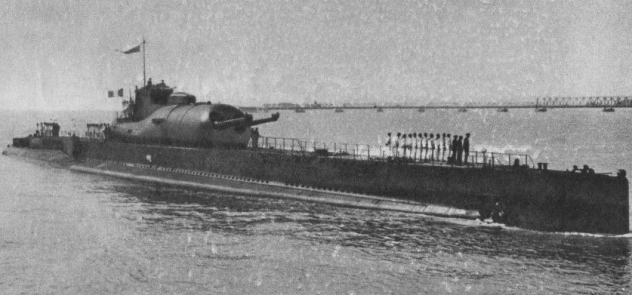
A mind-bogglingly large submarine built by the French in the late 1920s, the Surcouf was unique, not because of its more than 4,000–metric ton displacement, but because it carried two 20-centimeter (8 in) guns, ordinarily found on heavy cruisers. The signing of the Washington Naval Treaty banned submarines over 2,800 metric tons displacement, but a special dispensation was added allowing the French to keep the Surcouf. She was originally intended as the first of three new Surcouf-class submarines, but since new ships of her size could no longer be built, she became one of a kind.
The submarine served in the French navy until 1940, when the Nazis invaded France. Limping out of harm’s way to the UK on one engine, the Surcouf was repaired at Plymouth and ultimately seized there by the UK when France surrendered, in order to prevent it from potentially falling into Nazi hands. The submarine was then commissioned into the Free French Navy and used in the war effort. In December 1941, the Surcouf was ordered to the Pacific Ocean with America’s declaration of war on Japan, but she vanished with all hands. She was likely accidentally run over by a US cargo ship at night and sunk.
3 Type XVII Submarine
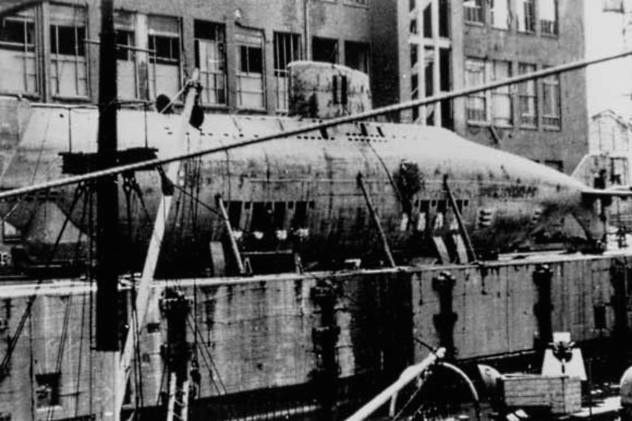
In 1933, German Professor Hellmuth Walter came up with a potentially revolutionary submarine propulsion system that would be more compact than existing diesel-electric propulsion systems, produce more power, and allow for extended periods underwater. The only catch was that it was powered by hydrogen peroxide, which is commonly used as a rocket fuel. The very next year, Walter proposed to the Kriegsmarine High Command a submarine that would travel at a top speed of 30 knots underwater, compared to the mere 7 knots that conventional submarines at the time could do.
The Walter turbine, as the propulsion system was called, used a stabilized form of hydrogen peroxide to react with fuel oil to produce steam, which would drive the turbine. The Kriegsmarine took one look at the proposal and threw it out. However, Walter was persistent, and in 1937, he got Karl Donitz, the future commander of Nazi Germany’s U-boats, to see a revised proposal. Donitz was impressed, and by 1939, construction started on a prototype U-boat powered by the Walter turbine. The prototype showed promise during testing, and four larger, ocean-going, Walter turbine–powered U-boats were ordered in 1942. They were canceled two years later in favor of conventional U-boats with more batteries and improved hydrodynamics for underwater speed.
Four smaller coastal submarines with Walter turbines were built and underwent sea trials—the Type XVII U-boats. However, none of them actually saw combat before the war ended. Britain ended up commissioning one of them as the HMS Meteorite for a short time and later built two hydrogen peroxide–powered submarines, but they were scrapped after nuclear power was proven feasible for naval use by the US, making Walter turbines obsolete.
2 Nakajima A6M2-N ‘Rufe’
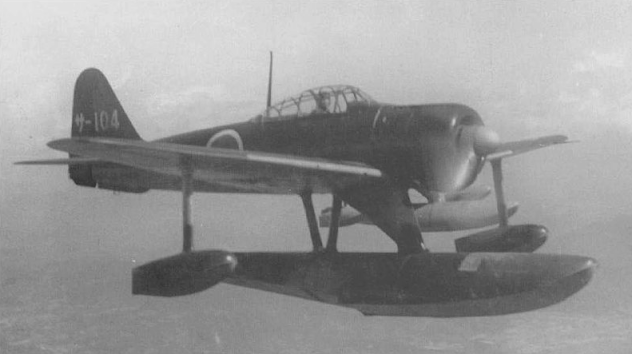
The only float-equipped fighter aircraft that saw service during World War II, the Nakajima A6M2-N “Rufe” was a version of Japan’s infamous Zero fighter with seaplane floats instead of conventional landing gear. It was designed to operate from island bases to support the Japanese war machine as it sought to control the far-flung islands of the Pacific. Zero fighters were modified by removing the landing gear and attaching a large central float underneath it, along with two smaller floats on the side. The first prototype fighter flew the same day that the Japanese bombed Pearl Harbor. The Rufe arrived just as the Pacific Theater of World War II kicked off.
Although its massive float degraded performance significantly, the Rufe was still very useful and proved itself in combat in the Solomon Islands. Then, the Americans bombed the base from which the seaplanes operated, destroying nearly all operational Rufes, in 1942. However, Japan was producing more Rufes; production ended up totaling several hundred seaplane fighters, which were used for attacking Allied convoys, patrolling, and gun-spotting for Japanese warships.
As the war dragged on, the increased number of Allied fighter aircraft meant that the Rufes became less and less useful, as their already degraded performance couldn’t even stand up to obsolete Allied aircraft, not to mention the newer models being fielded. The few Rufes left by the end of the war were assigned to defend against Allied bombings of Japan, and they performed very poorly in that role.
1 The Canal Defence Light
An attempt by the Allies to develop a weapon that would use light as a weapon to disable Nazi soldiers, the Canal Defence Light, as it was code-named, was the brainchild of a Greek engineer who was living and working in Britain. Using a powerful flickering searchlight, it would blind the viewer by causing the pupils of the eye to rapidly expand and contract, causing nausea and dizziness from its dazzling effects. The searchlight was mounted on a tank (replacing the main gun), with an armored shutter allowing light out. In tests, the weapon proved extremely effective.
While hundreds of the secret weapons were produced and shipped to the Allied front lines, they were never used as intended, partly because they were so secret that Allied commanders had no idea they existed and partly because the commanders who knew that they did exist didn’t believe they would actually work. Instead, some were used as actual searchlights during the Allied crossing of the Rhine to spot saboteurs trying to destroy the bridges that the Allies needed to cross into Germany. After the war, they were scrapped, a sad ending for a weapon with so much potential.
Sam is a college student living the college life!
